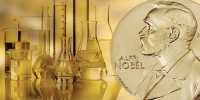Atoms are commonly known as the building blocks of the world. At lengths of 0.1–0.3 nanometers, the chemical bonds are about half a million times smaller than the width of human hair. Yet the possibility of being able to film nuclear bonds seemed almost impossible.
Thanks to a research team from the UK and Germany, students may now be able to perform 18 seconds of bond dancing to two rhenium (Re) atoms. To date, the bonding process has been demonstrated in classrooms and labs using ball-and-stick models.
Researchers at the University of Nottingham and the University of Ulm stuck a pair of rhenium atoms in a carbon nanotube – a carbon nanometer-wide empty cylinder that acted as a “test-tube” for the atom, as described in Science Advances.
The team then used transmission electron microscopy (TEM) to create a “film” of the atom. In TEM, a high-powered electron beam is blasted through an object and detected on the other. The beam not only paints a picture of activity, but it also transfers energy that can be used to break chemical bonds. Using the tools of the Solve project, this “two-in-one” technique enables them to film the “walking” of the rhenium atom (Re2) enclosed along the nanotube.
In fact, at one stage, as the length of the bond expands to a size larger than that of the atom, the bond snaps. The atoms later reformed into a Re2 molecule in the image. “Importantly, the length of the bond changes as the Re2 nanotube goes down, indicating that the bond becomes stronger or weaker depending on the environment around the atom,” Describing the film captured, Dr. Kecheng Cao, a research assistant at Ulm University, said.
“Because of the high atomic number of rhenium, it is easier to see in TMM than in light elements, which allows us to identify each metal atom as a dark point,” explained Professor Andrei Khlobystov, co-leader of the project and Professor Nottingham from the University’s School of Chemistry.
As Andrei Khlobystov puts it “We are now moving beyond the boundaries of molecular imaging beyond general structural analysis, and towards understanding the dynamics of individual molecules in real-time.” To understand the bonds between metal molecules, such as rhenium, it is important to identify the properties of any material. The imaging atom, as this team did, will provide a jump forward to do this.















